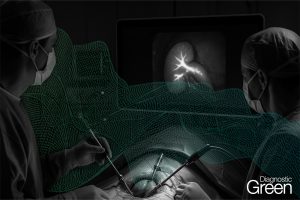Background: Indocyanine green (ICG) is a dye used in medicine since the mid-1950s for a variety of applications in in cardiology, ophthalmology, and neurosurgery; however, its fluorescent properties have only recently been used in the intraoperative evaluation of tissue perfusion. A literature review was conducted on the characterization and employment of ICG within the medical field. Historical and current context of ICG was examined while also considering implications for its future use.
Results: ICG is a relatively nontoxic, unstable compound bound by albumin in the intravascular space until rapid clearance by the liver. It has widespread uses in hepatic, cardiac, and ophthalmologic studies, and its use in analyzing tissue perfusion and identifying sentinel lymph nodes in cancer staging is gaining popularity.
Conclusions: ICG has myriad applications and poses low risk to the patient. Its historical uses have contributed to medical knowledge, and it is now undergoing investigation for quantifying tissue perfusion, providing targeted therapies, and intraoperative identification of neurovascular anatomy, ophthalmic structures, and sentinel lymph nodes. New applications of ICG may lead to reduction in postoperative wound-related complications, more effective ophthalmologic procedures, and better detection and treatment of cancer cells.




